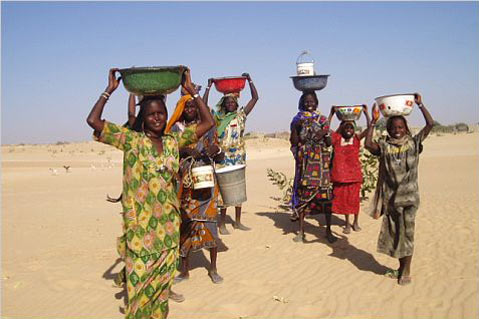Santa Barbarans Build Projects in Chad
Local Relief Foundation's New Online Fundraising Campaign Bears Fruit

In January 2010, three Santa Barbarans active in the Chad Relief Foundation (CRF) will travel to Chad for the fifth time in three years. President Bill Felstiner, Vice President Catherine Swysen, and Dr. Mary-Louise Scully from the board of directors will make the two-week, mid-January trip in 2010 to assess the progress of existing projects and initiate new efforts. The expenses of these trips are paid by the participants themselves.
Recently, the CRF initiated an online campaign to raise money to complete projects already underway. So far, this campaign has raised $21,000 of the $27,000 required.
United Nations refugee camps in southern Chad are home to 70,000 people who fled across the border from the war-torn Central African Republic. The Chad Relief Fund focuses on two sets of camps, about 150 miles apart, outside the villages of Gore and Danamadji. The Relief Fund has already financed five projects in Gore, three of which are complete.
According to Felstiner, while in Chad this January, the group will focus on three things. First, he said, “We will take a look at the projects that we have completed, making sure that they are being run adequately.”
Secondly, they will look at projects that are underway. This includes the construction of a soccer field at a school that CRF built with UNICEF, and an educational project focusing on protection of women and children. “We also plan to provide solar power for rural health centers and mosquito nets for the local population, and we’ve been negotiating about providing schoolbooks and teacher training materials,” said Felstiner.
The third goal of the trip will be to hire a local staff to improve project implementation.
After spending time in Gore, they will make the 150-mile trip to Danamadji, where they will discuss five or six more projects. “We will also work to hire local field staff in that area,” said Felstiner.
The CRF has gone from initially working through international NGOs to working with local NGOs and local groups, essentially from relief to empowerment. For example, according to Felstiner, recent funds went to “a group composed of the school administrator and the parents of the students in the school.” These local groups, which include refugee parents along with various volunteers, contribute actual work on projects.
Since the CRF’s inception in fall of 2007, it has raised money primarily from individuals in the Santa Barbara community, many of them friends, acquaintances, and families of people involved. The email campaign initiated in early December, however, aims to reach out to a broader base of people in order to raise additional funds.


